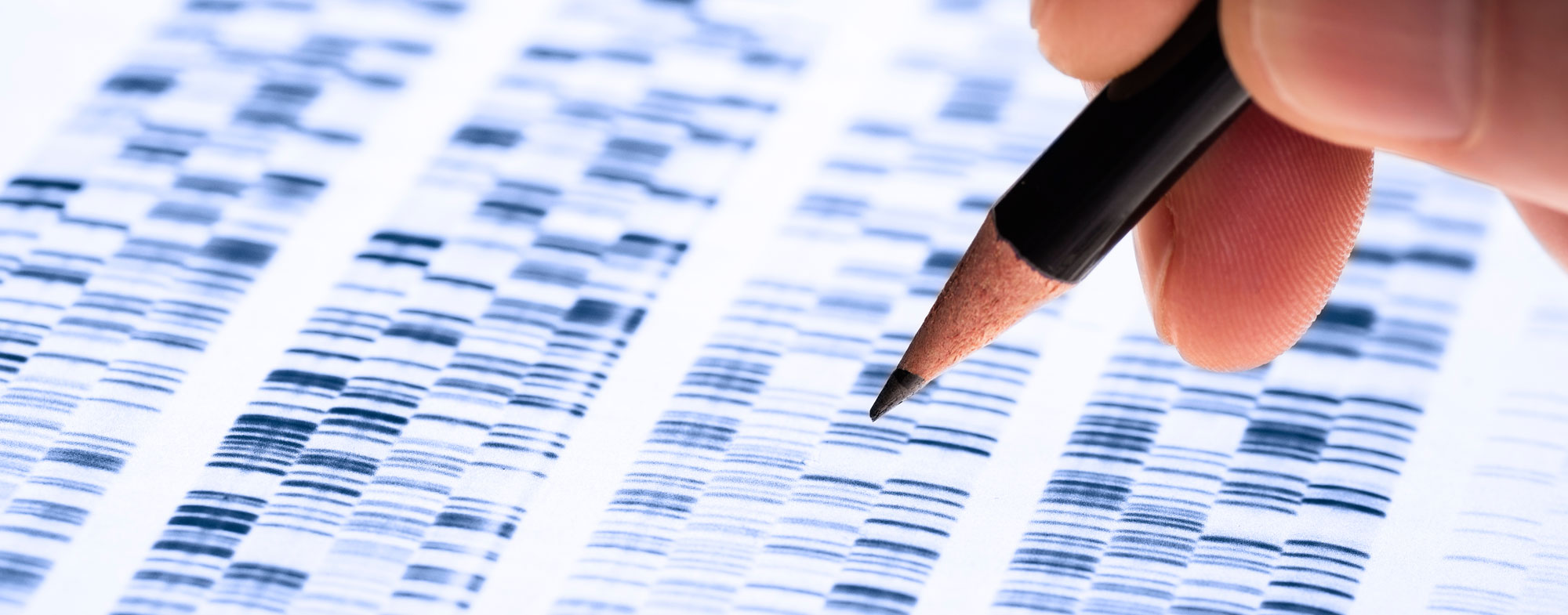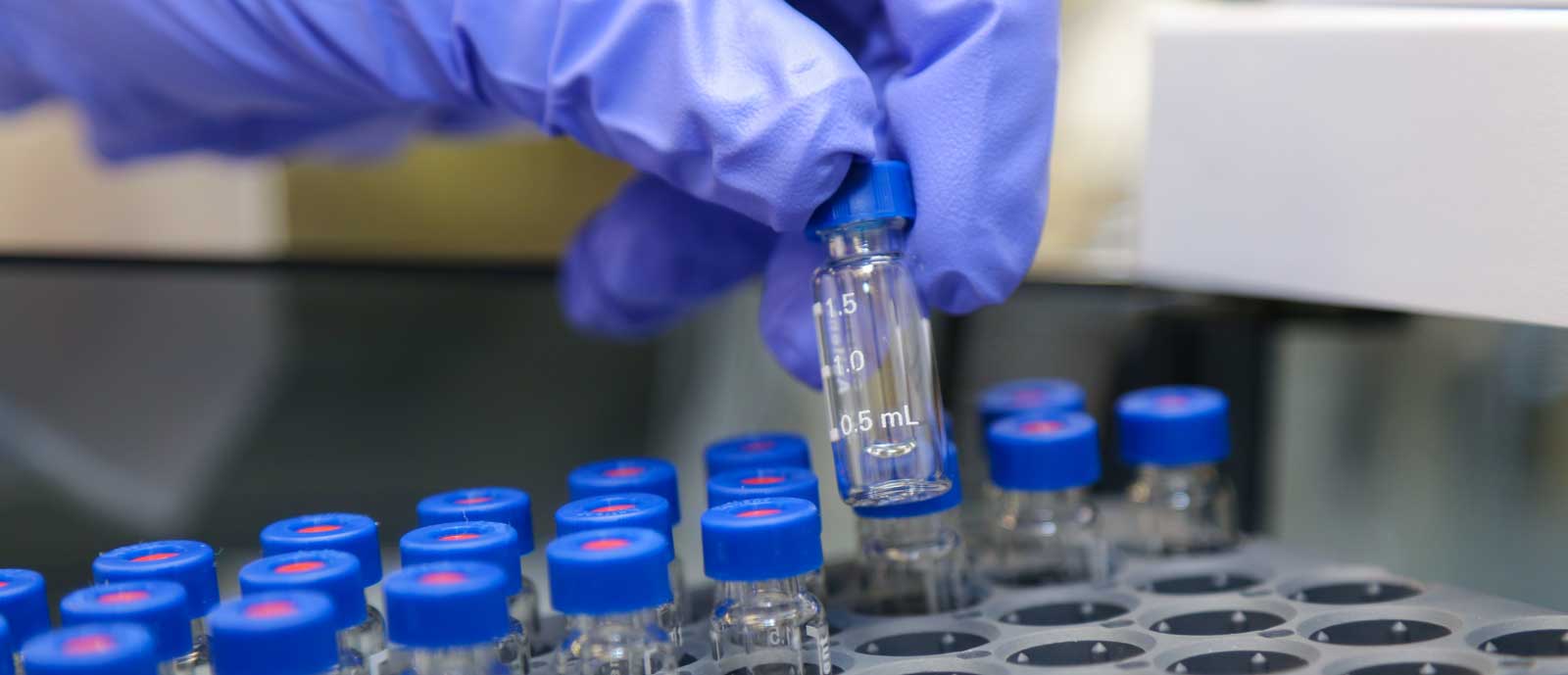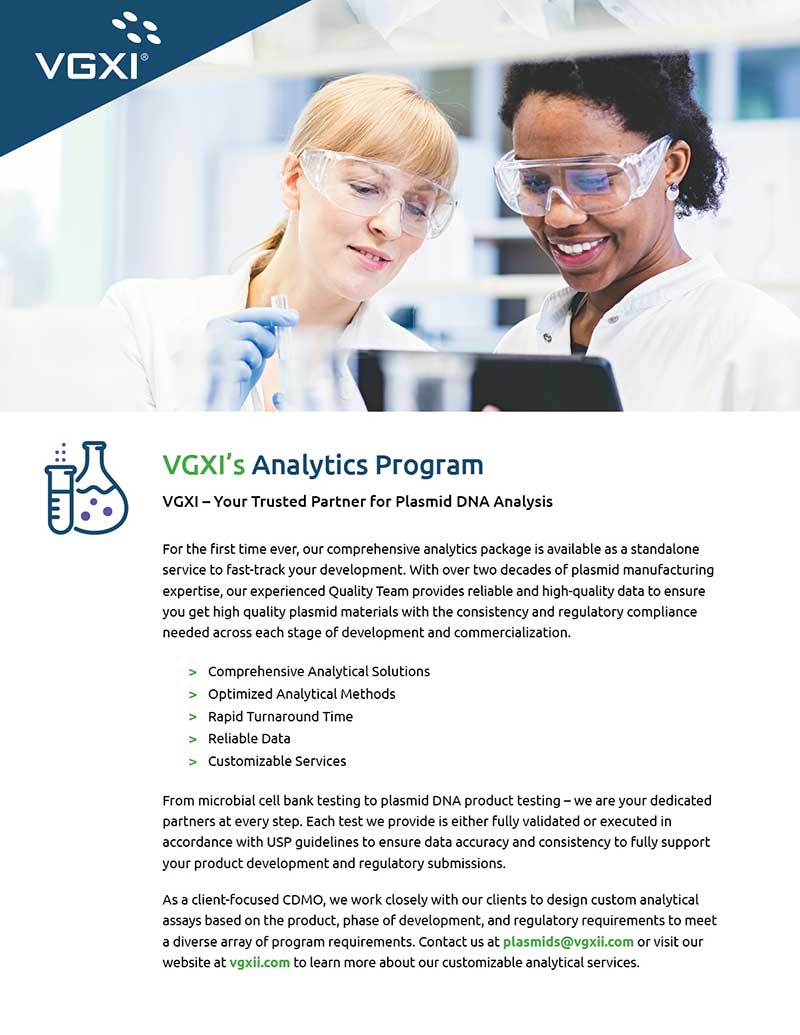Analytical Testing for Plasmid DNA
Analytical testing is critical to verify that E. coli master cell banks (MCB) and plasmid DNA products satisfy quality release specifications as a prerequisite to their use in the manufacture of cell and gene therapy (CGT) products, as well as vaccines and immunotherapies.
VGXI’s highly skilled Quality Control Team provides comprehensive support for all standard QC testing protocols applicable to E. coli MCBs and plasmid DNA products to ensure you get high quality plasmid materials with the consistency and regulatory compliance needed across each stage of development and commercialization. Each test our quality team performs is either fully validated or executed in accordance with USP guidelines to ensure data accuracy and consistency.
As a client-focused CDMO, our team offers additional supplementary assays beyond the recommended standard QC testing, and we work closely with our clients to tailor anayltical testing panels based on the product, phase of development, and regulatory requirements to meet a diverse array of program requirements. Contact us to learn more about our customizable analytical services.
Available Release Testing for Plasmid Master Cell Banks |
|
|---|---|
| Host Identification | Confirms the identity of the host organism (E. coli) that carries the plasmid of interest |
| Identification of E. coli K12 strain | Identifies that the correct bacterial strain— E. coli K12 strain—is being employed for the plasmid production. |
| Culture Purity | Verifies that the bacterial culture used for plasmid production is free from contaminants such as other bacteria or fungi. |
| Bacteriophage Detection | Detects the presence of bacteriophage, which can impact the health and viability of the host cells used for plasmid production. |
| Cell Viability | Assesses the health and viability of the host bacterial cells, essential for optimal plasmid production yields. |
| Plasmid Identification | Confirms the presence of the target plasmid in the host cells using DNA sequencing. |
| Plasmid Retention | Verifies the stability of the plasmid during host cell division over multiple generations by overnight incubation of the bacterial culture. |
Available Release Testing for Bulk Plasmid DNA Products |
|
| Nucleic Acid Concentration | Quantifies the concentration of the plasmid DNA. |
| Purity by A260/280 | The A260/280 ratio is used to assess the purity of the plasmid DNA sample. A pure DNA sample has a higher A260/280 ratio, indicating minimal protein contamination. |
| Identity by AGE | Verifies the presence and size distribution of the plasmid DNA fragments to confirm that the correct plasmid DNA is present and that it has the expected size. |
| Analysis of Total Supercoil Forms by HPLC | Analyzes the proportion of supercoiled plasmid DNA. |
| Analysis of Total Circular Forms by HPLC | Analyzes the proportion of circular plasmid DNA. |
| Host-Cell RNA | Detects the presence of RNA from the host bacterial cells. Excessive host-cell RNA contamination can interfere with downstream processes. |
| Host-Cell Protein | Detects the presence of proteins from the host bacterial cells. Protein contamination can affect the purity and quality of the plasmid DNA product. |
| Host-Cell DNA | Detects host-cell DNA contamination ensures that the plasmid DNA sample is free from residual bacterial genomic DNA. |
| Endotoxin | Ensures that endotoxin levels meet regulatory standards, which is critical for patient safety if the plasmid DNA is intended for use in therapeutic applications. |
| pH | Measuring the pH confirms the plasmid DNA is within an acceptable pH range for stability and compatibility with subsequent processes. |
| Appearance | A visual inspection assesses the physical characteristics of the plasmid DNA sample, ensuring it is clear from visible contaminants. |
| Bioburden | These tests evaluate the presence of microbial contamination. |



